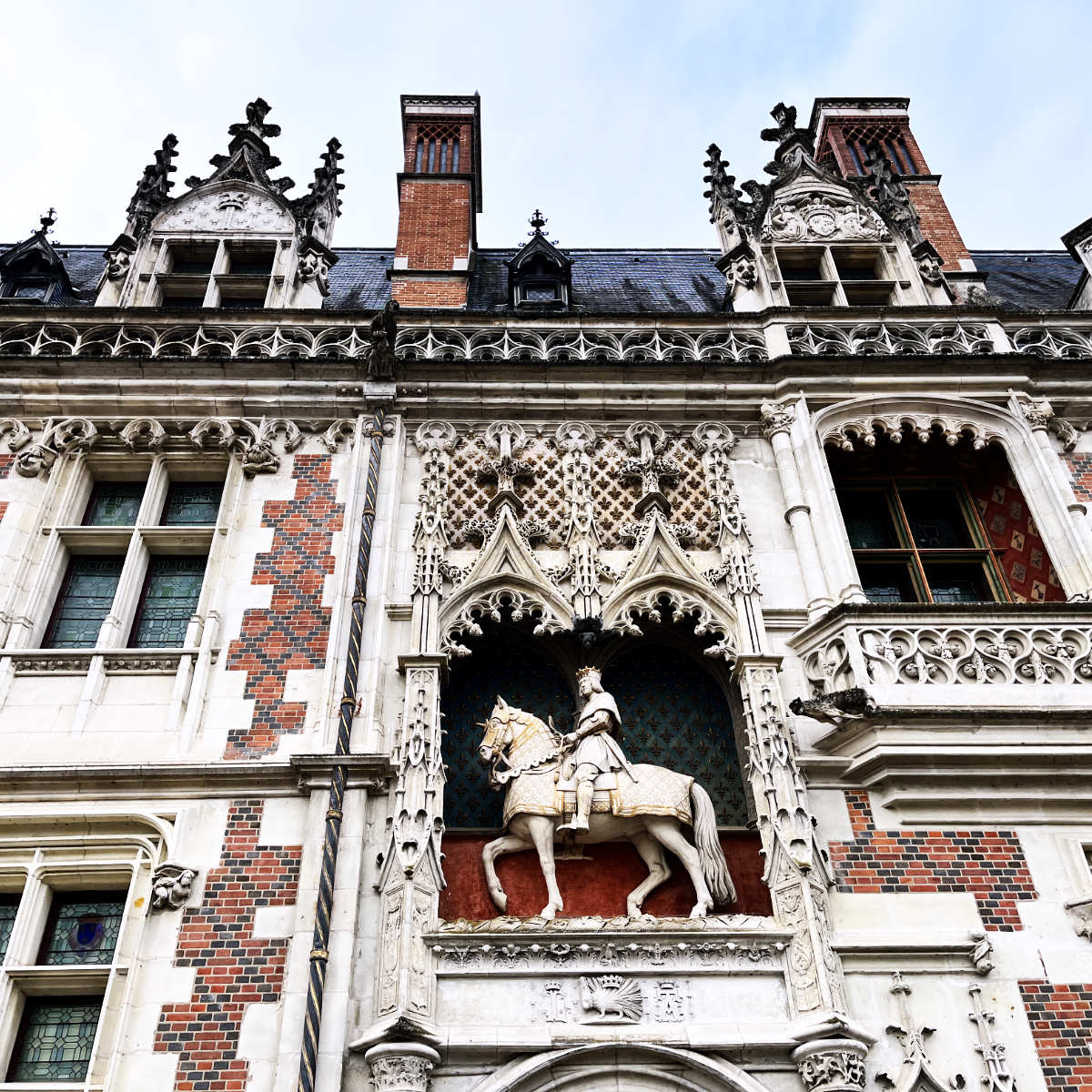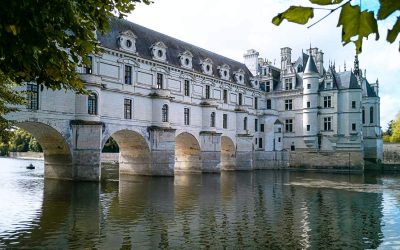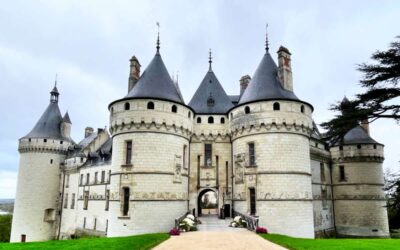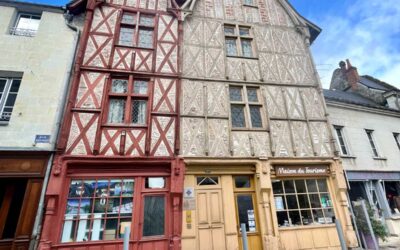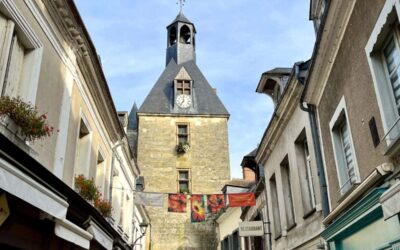The Château de Blois was once a royal home. During the Renaissance period, the Loire Valley was the seat of power with several French Royals born in the castle and around the area.
Along with being the seat of royalty and nobility, the Château Royale de Blois is also known as the base where Joan of Arc prepped her troops in 1429 as she prepared to confront the English who had taken nearby Orléans.
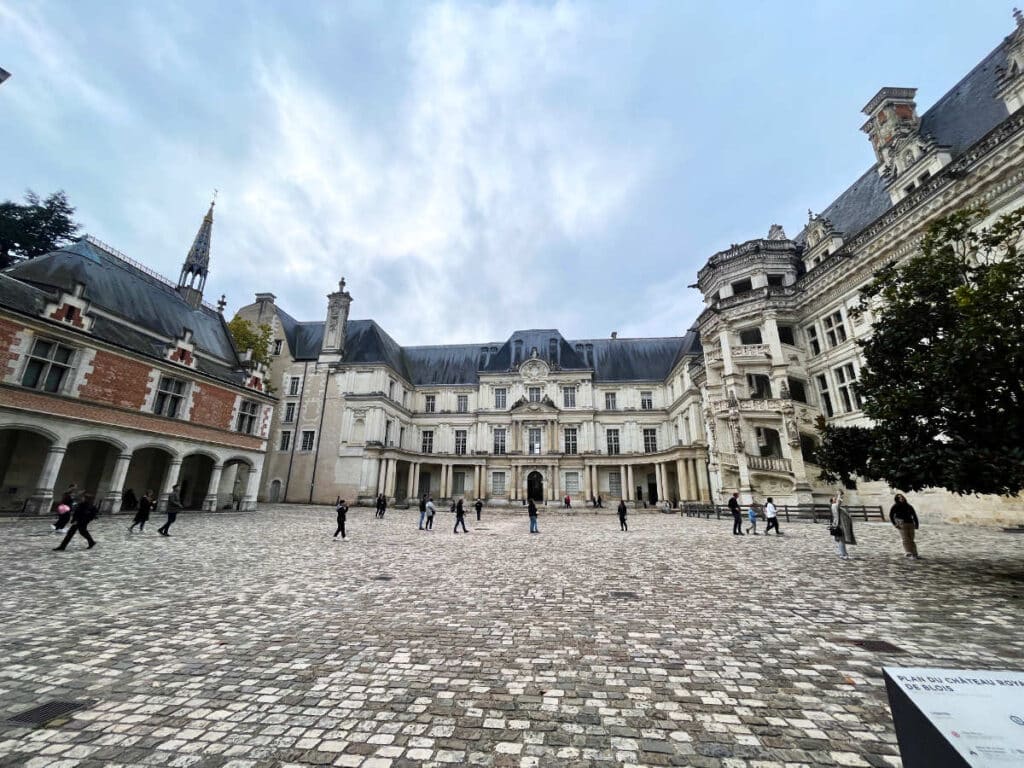
It is a few miles from the Loire river near other famous châteaux in the area like Château de Chenonceau, Château de Cheverny, Château de Chaumont, and Château de Chambord, near the cities of Amboise and Blois. It is about 3 hours away from Paris, making it ideal for a day trip from the city.
With decorations spanning its history, the Château de Blois is a must for any visitors to the city of Blois and the Loire Valley. So let’s explore the history of the château and what there is to see inside, shall we? Allons-y!
History
The original building here dated back to the 9th century owned by the Counts of Blois. In 1397, the castle at Blois was given by King Charles VI of France to the Orléans family, a cadet branch of the royal family who would a few decades later inherit the throne themselves.
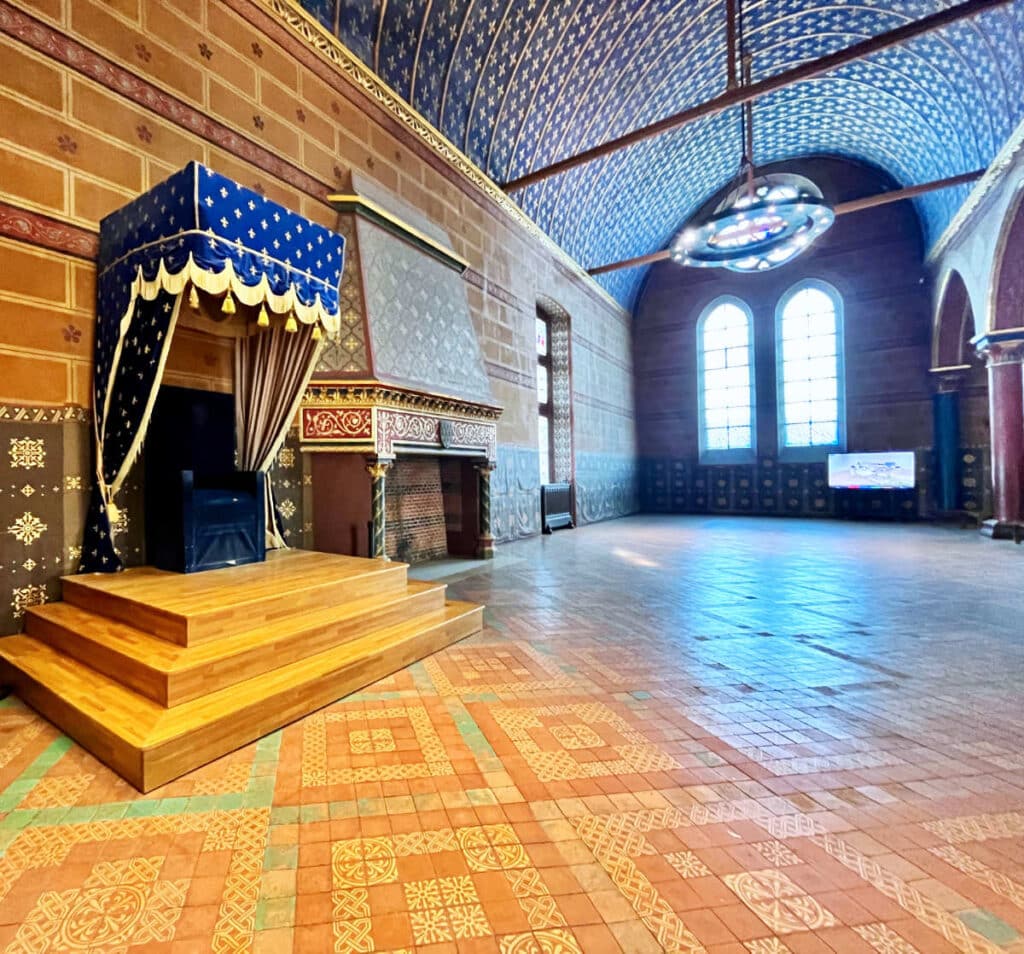
The Château eventually was inherited by Charles d’Orléans, a royal prince and poet in the 15th century. He had been captured at the Battle of Agincourt and imprisoned in England.
After being held for 25 years as a hostage in England, he returned to his beloved Blois and poured his passion into renovating much of the original building.
His son who would become King as Louis XII of France. Along with his wife Anne of Brittany they would also embark on many renovations. It is Louis XII’s statue that stands on the front facade of the Château de Blois.
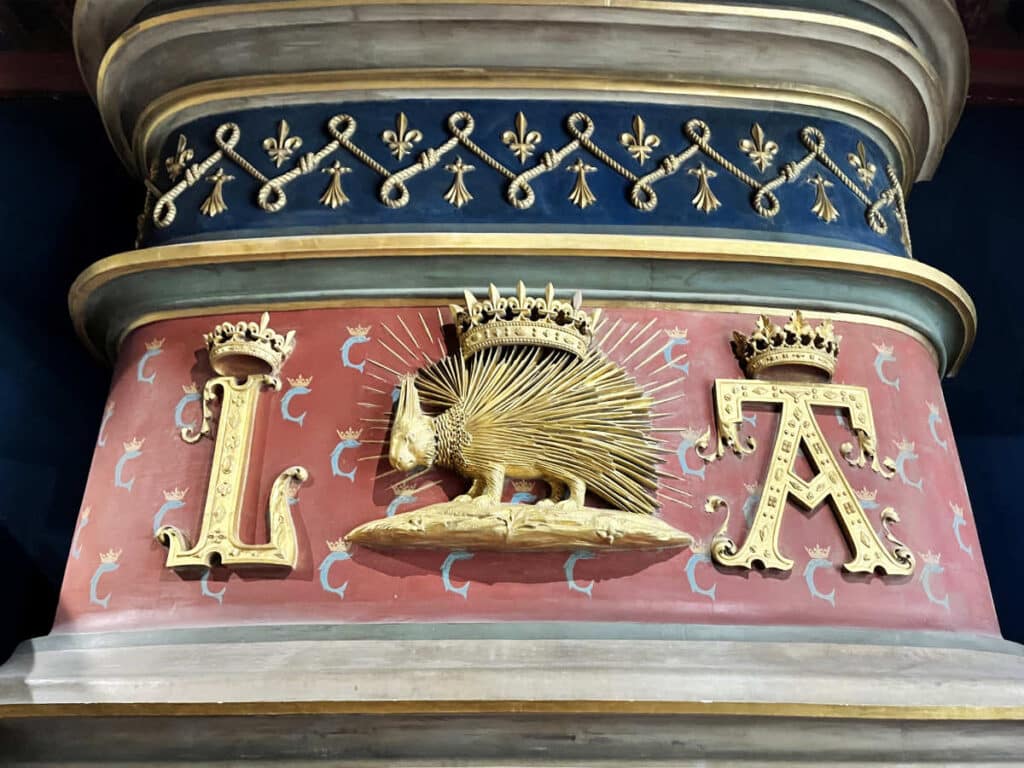
All over the castle, you can see the initials of Louis and Anne, along with Louis XII’s symbol of “the porcupine” and the royal “fleur de lys“.
It would be the next King, François 1er who would be the next to make his mark on the Château. This was his wife Claude’s childhood home as she was the daughter of Louis XII and Anne. He added a new wing and undertook many other works.
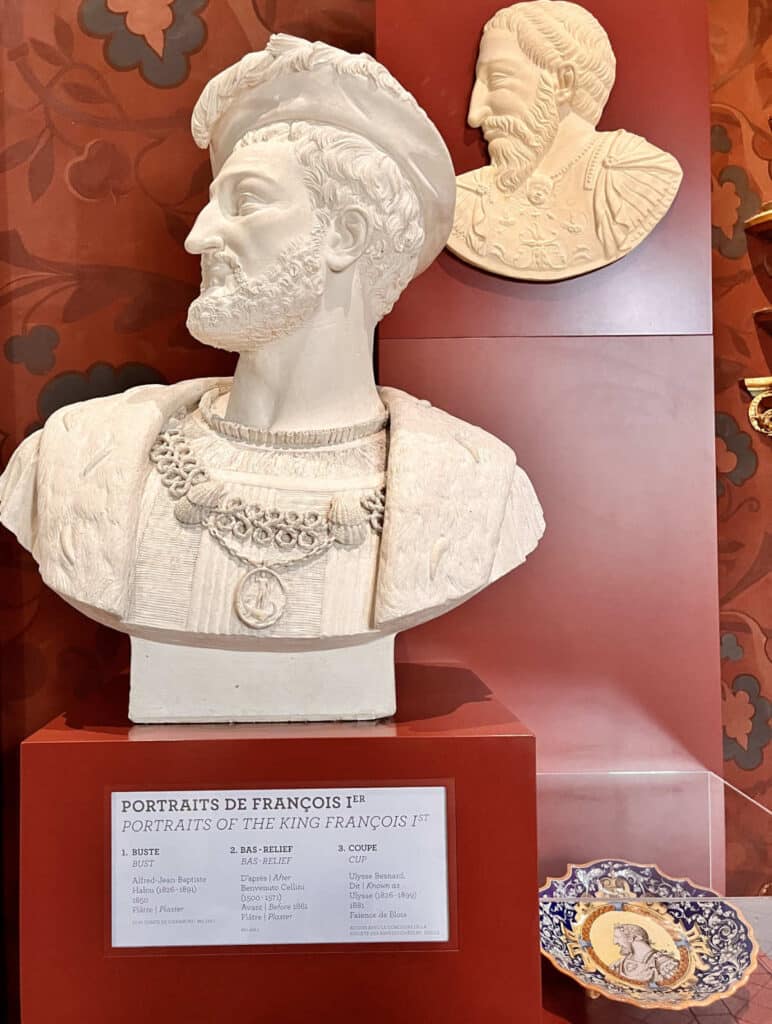
Claude died however, and François 1er lost interest in Blois. He remarried, moving many of the furnishings to his renovated Château de Fontainebleau and the magnificent library that had been assembled here. The library would become the foundation for France’s Bibliotheque Nationale.
It remained within the royal sphere of castles however, with Queen Catherine de Medicis living here in her last years. While she was on her deathbed on her side of the castle, the Château de Blois was also the scene of a famous murder.
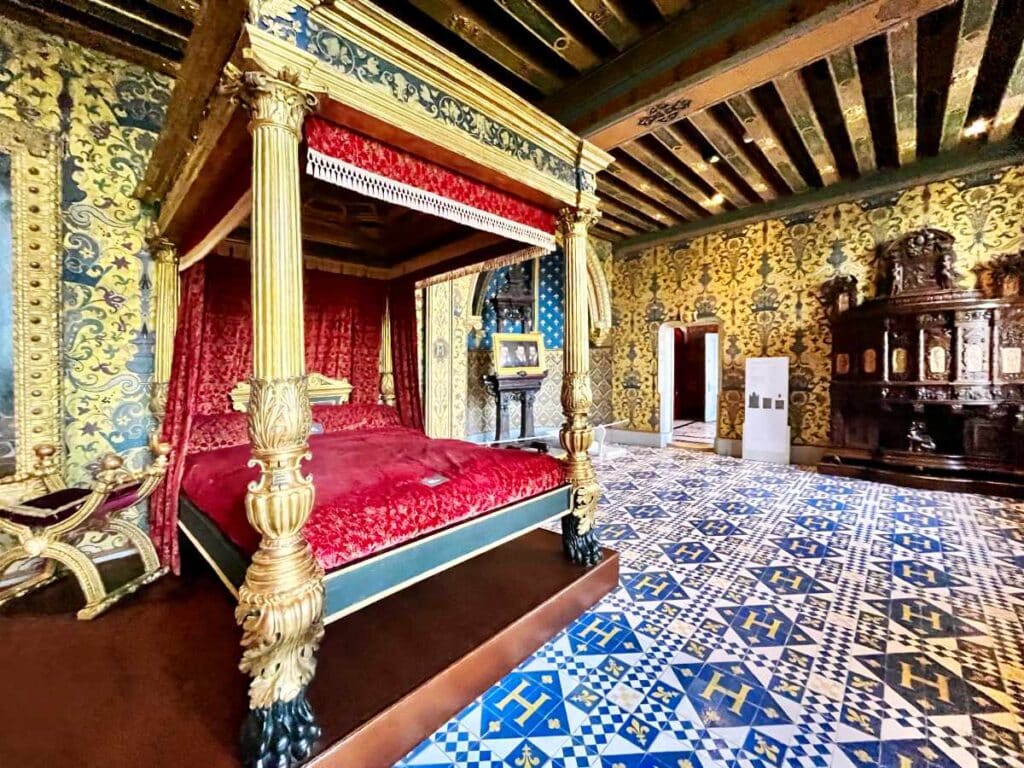
Catherine’s son Henri II had his enemy, the Duke of Guise assassinated in December 1588. The Duke of Guise had been summoned in pretence of an upcoming trip, when he was ambushed while crossing the king’s bedroom and stabbed 30 times. The next day, his brother the Cardinal Louis II of Lorraine was also assassinated here. (Catherine would die a couple of weeks later)
In the 17th century, the château ended up stripped for its furnishings by the Sun King Louis XIV who was busy building the Palace of Versailles. Later in the 18th century, the building was so run down that King Louis XVI (husband of Marie-Antoinette) considered demolishing it in 1788.
The edifice was saved when the Royal-Comtois Regiment established their base within it, and the onset of the French revolution in 1789. One of the last royals to live here was Marie Louise, the wife of Napoleon Bonaparte who found refuge in Blois briefly in 1814 after her husband was defeated by the English.
Today, the Loire Valley châteaux like the Château de Blois are officially recognized on the UNESCO world heritage list.
Inside the Château
The Château de Blois has several wings with the ground floor dedicated to the earliest days of the fortress and mockups of what the château used to look like.
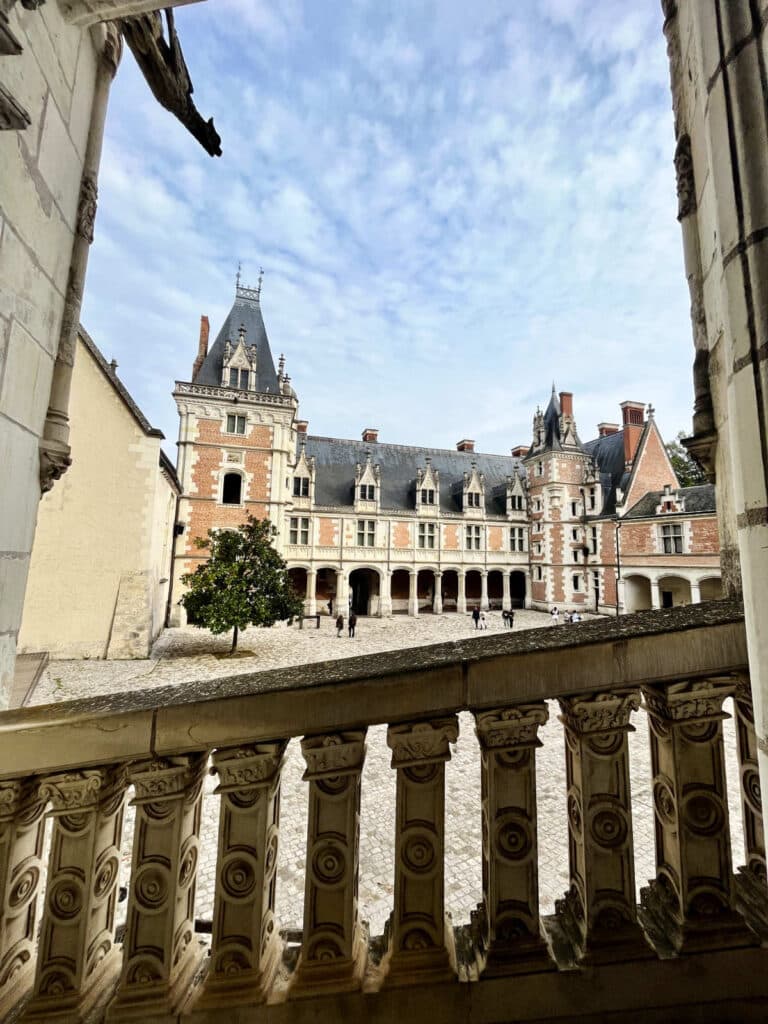
Each of the 4 wings are in a different style. The oldest is the gothic wing in 13th century Middle-ages style. Next are the Louis XII red and white brick wing in a style called “flamboyant”, and François I’s renaissance white stone facade style. And finally is the classism style of the 17th century in the “newest” wing, which remains incomplete.
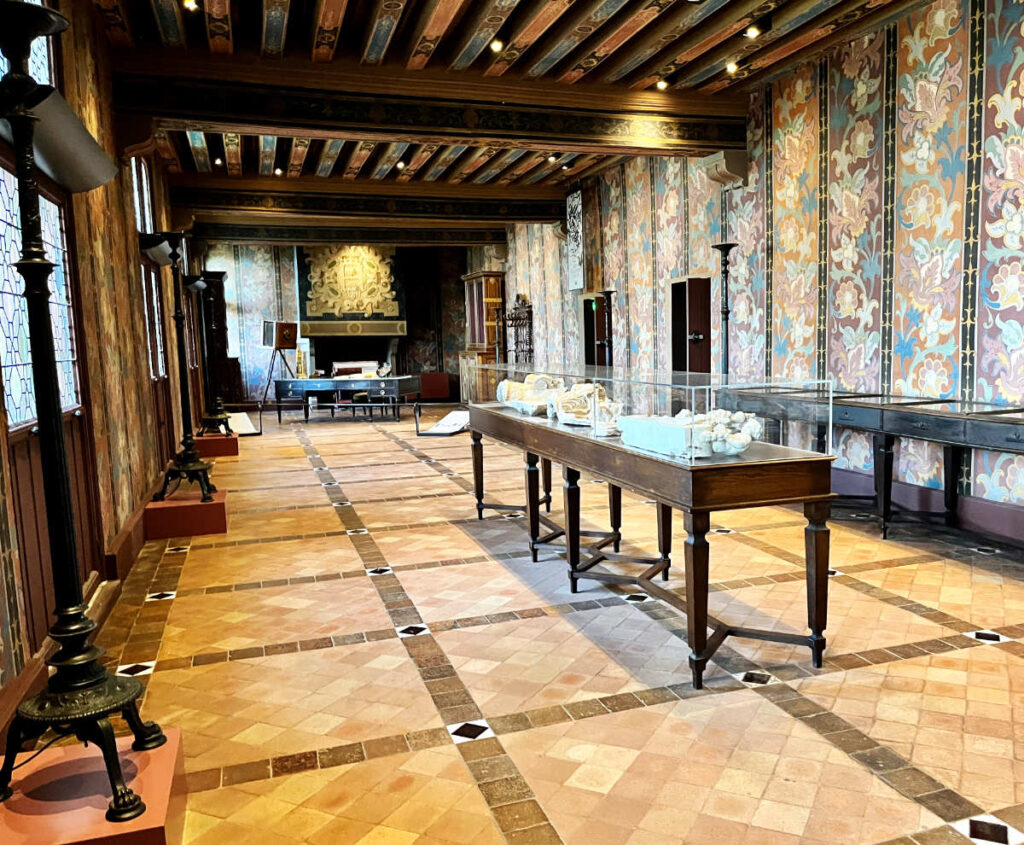
On the first floor are the more elaborate rooms, with many highly decorated rooms with panelling and tiled floors. Many of the original furniture has long been moved to other different royal palaces around France. But there are enough furnishings in each room to give a sense of the purpose.
Among the vast rooms is a rather small study with elaborate panelling that is just off of one of the royal bedrooms. This study was designed under Catherine de Medici and each of the paneling opens up to hold secret compartments.
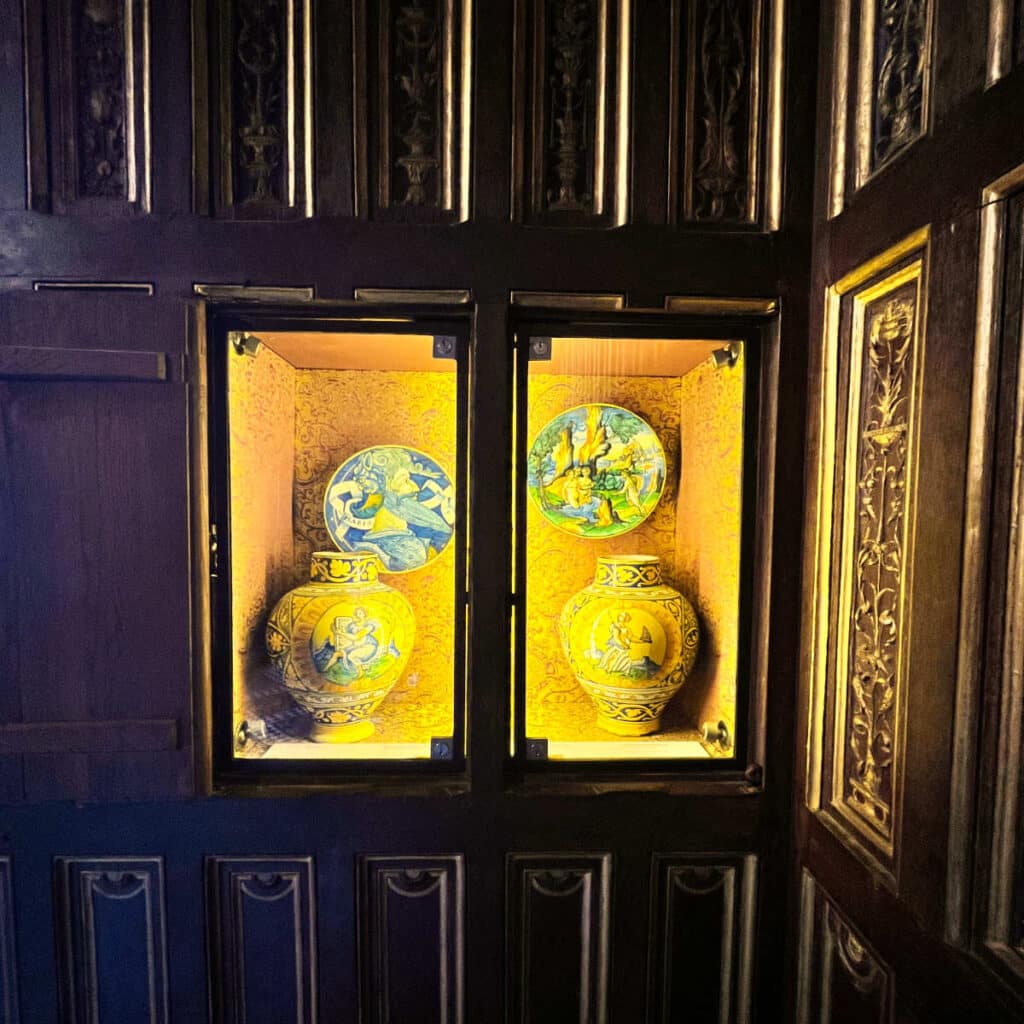
It is said that this is where she kept her poisons, to do away with those who got in her way.
One of the most stunning parts of the Château de Blois is the lavish ceremonial staircase in polygonal form that is half embedded into the façade of the building. It is attached to what is called the François 1er wing as it was under his reign that it was commissioned.
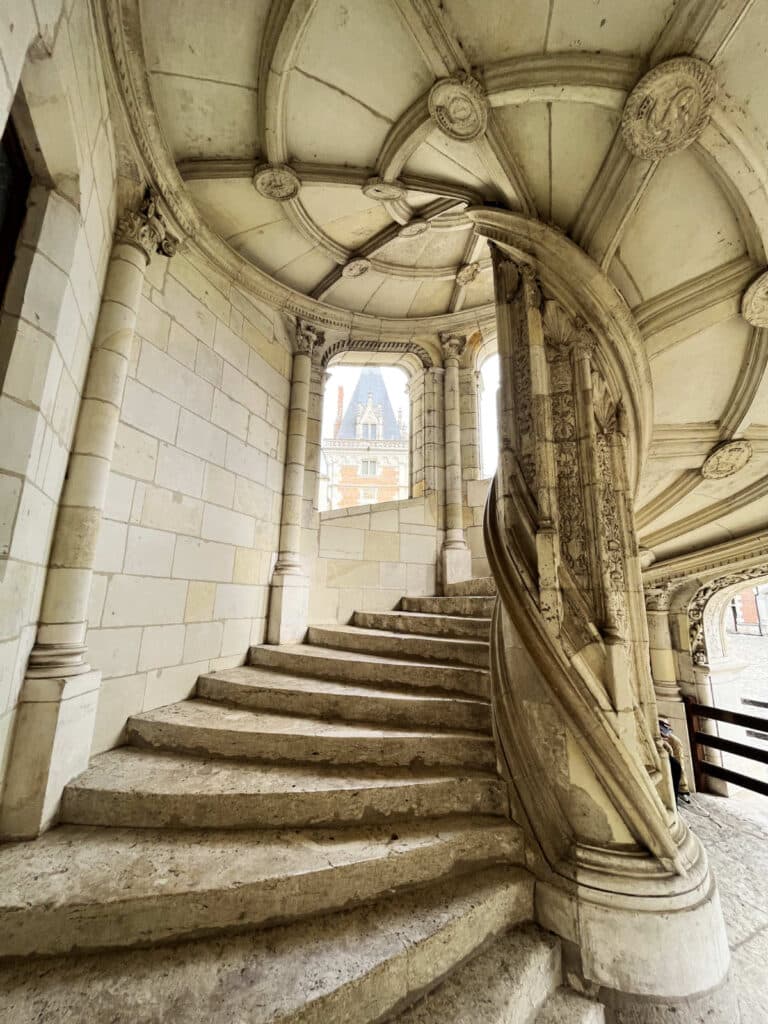
Visitors to the nearby Château de Chambord will recognize the similarity of the design with the double helix staircase that is at Chambord, which was also constructed during the reign of François I. The Blois staircase however is a single staircase, not double.
The Gardens
Compared to some of the other nearby châteaux like Chambord, Chaumont or Chéverny, the Château de Blois does not have as large a garden. Much of the area around the castle is built up by the city of Blois, including a large parking directly under the castle.
The Château de Blois does have a large courtyard where there is a small garden along with trees planted. The garden also comes with beautiful views of the city of Blois below.
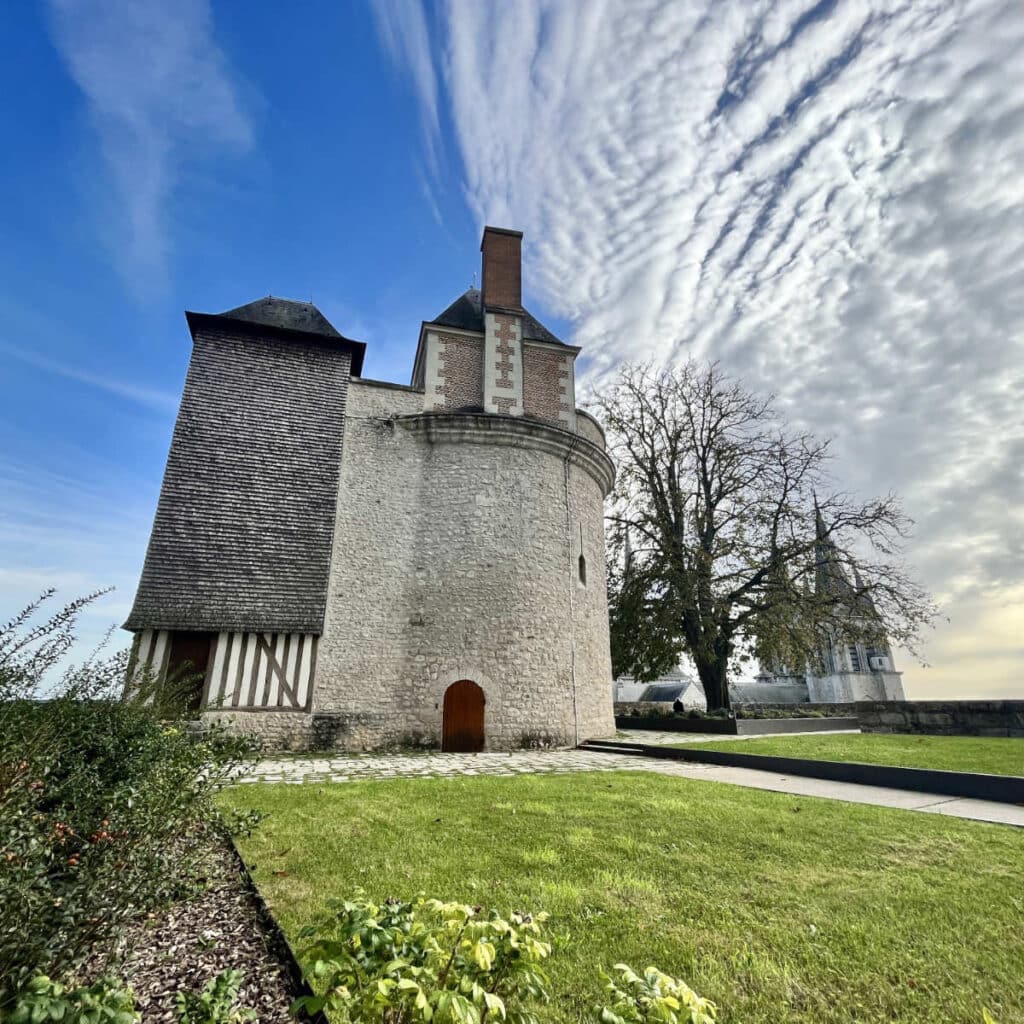
In one corner of the courtyard sits the historic Foix Tower. It is the ancient part of a 13th century medieval fortress that once stood here to guard the city of Blois.
In the 17th century after it was no longer needed as a defensive tower, it became an observatory of astronomical science. The tower is only rarely open to visit, but you can still see beautiful views of the city from its base.
How to get there?
The Château Royale de Blois is quite accessible from Paris by car and by train. It takes approximately 1h45 to drive from Paris depending on traffic. By train, you can take a TER train from Paris’s Austerlitz station to Orlèans and then change trains to Blois (in the direction of Tours). The trip is approximately 2 hours.
There are also various tour options leaving from Paris, which will have you there and back in style. The Loire is one of the big French wine regions, so certain tours combine wine-tasting and sightseeing. You can see the tour options to the Château de Blois here.
Where to stay?
There are several wonderful hotels in the city of Blois, next to the Château de Blois and around the center of the city. Some recommended hotels are:
- €€€ – ibis Blois Centre Château
- €€€€ – Hotel Mercure Blois Centre (with pool)
- €€€€€ – Fleur de Loire (on the quai across from the old city center of Blois)

If you enjoyed that article, you may like to read more about traveling around the Loire Valley. A bientôt!
